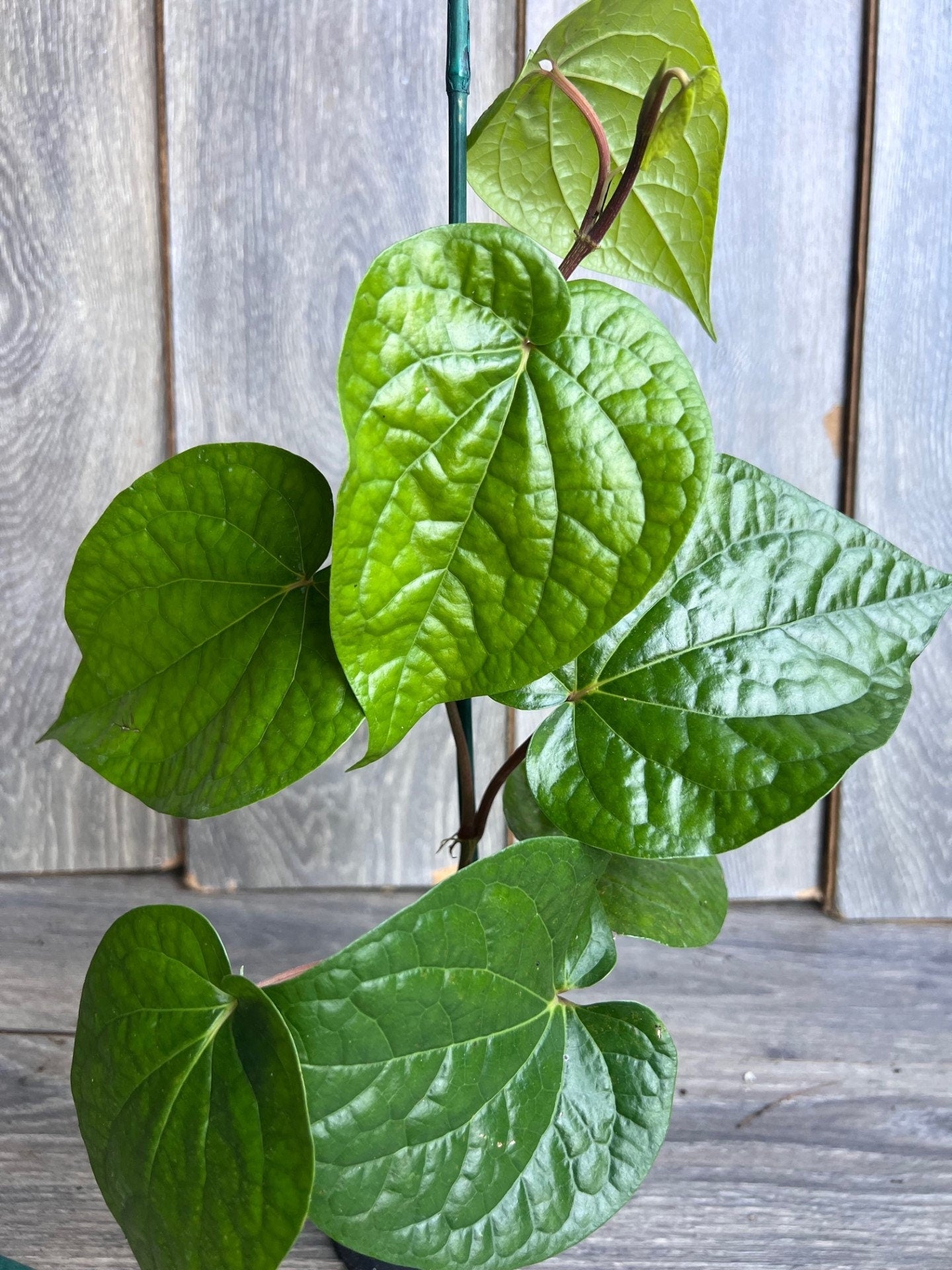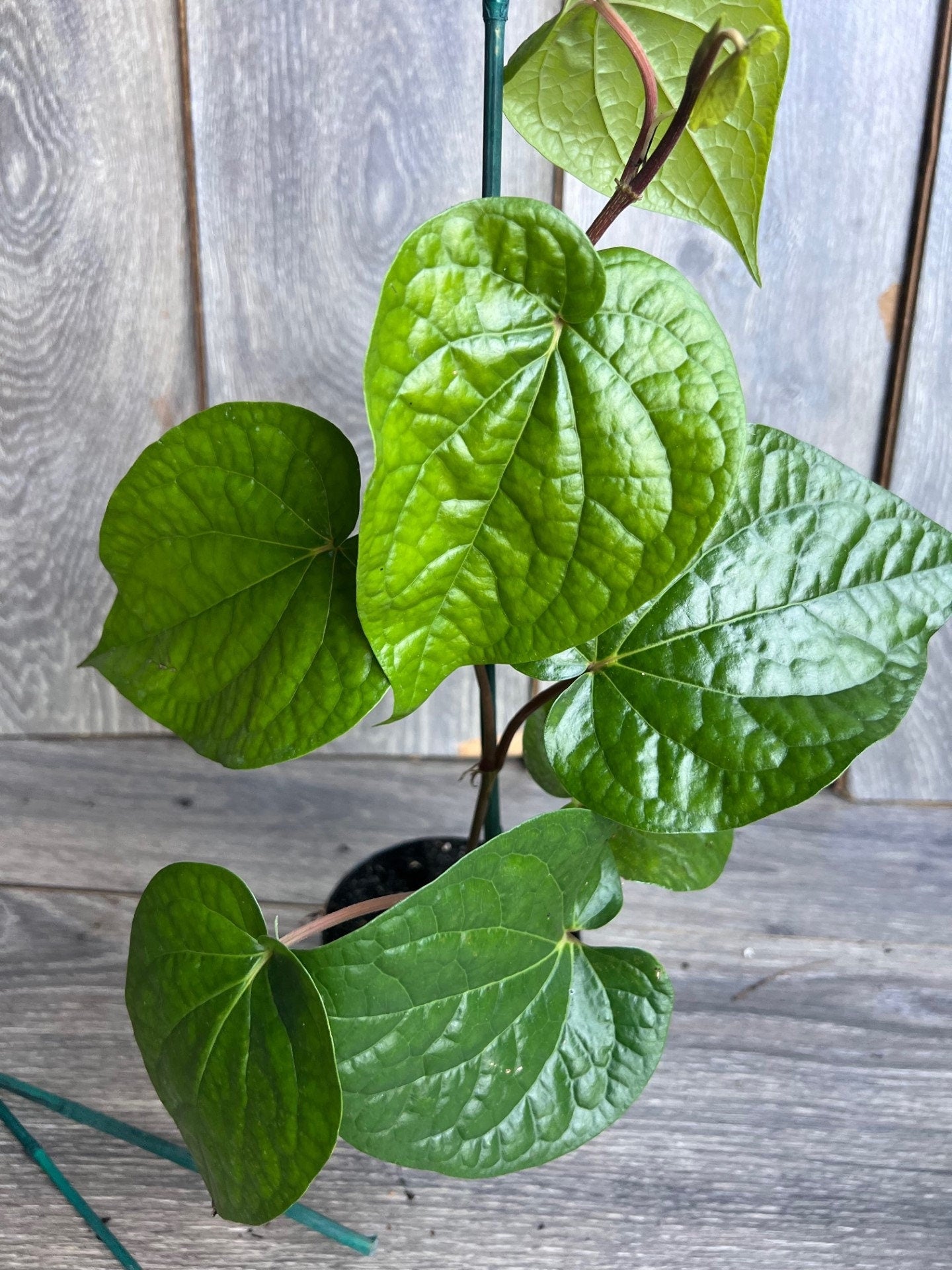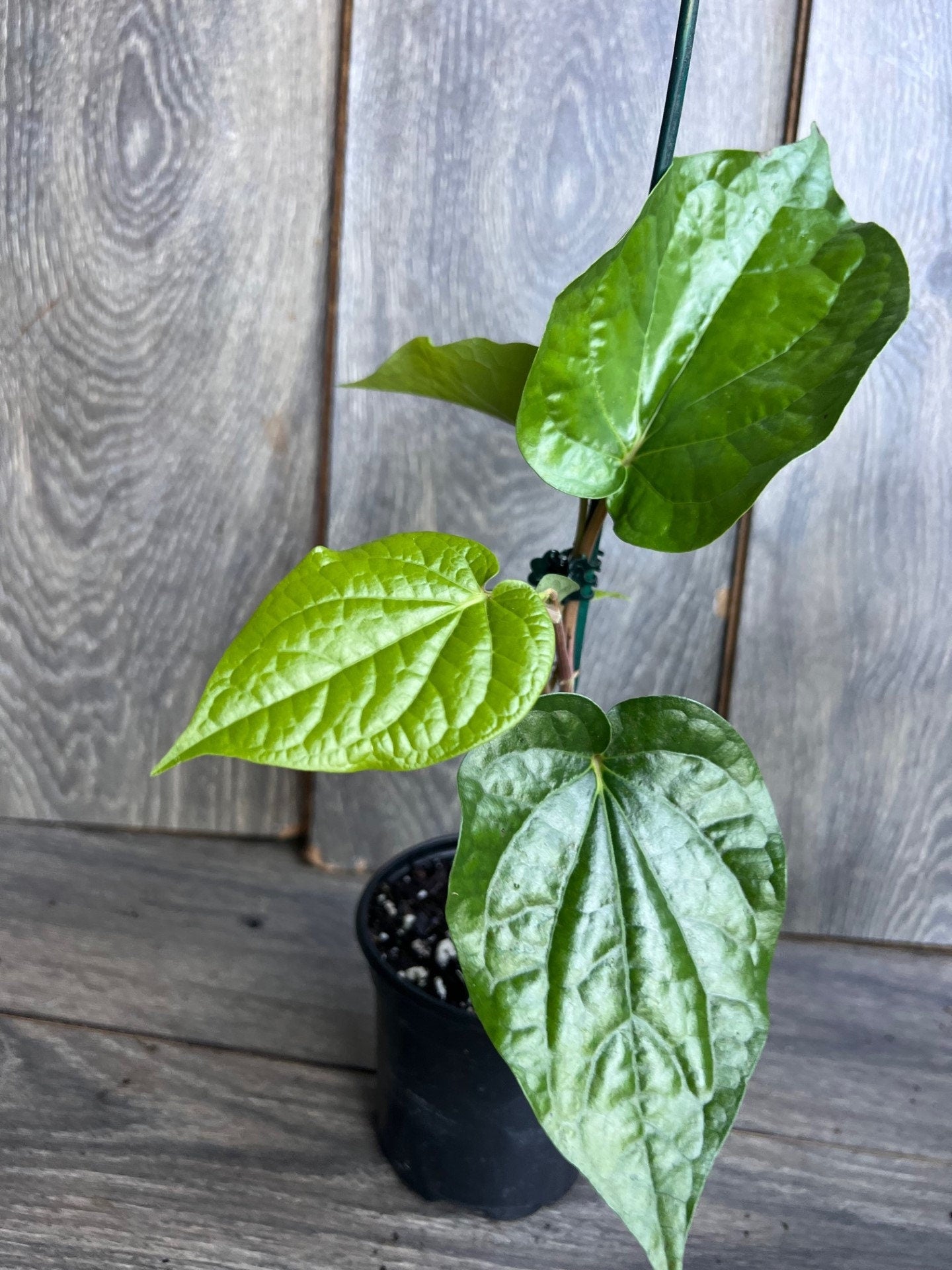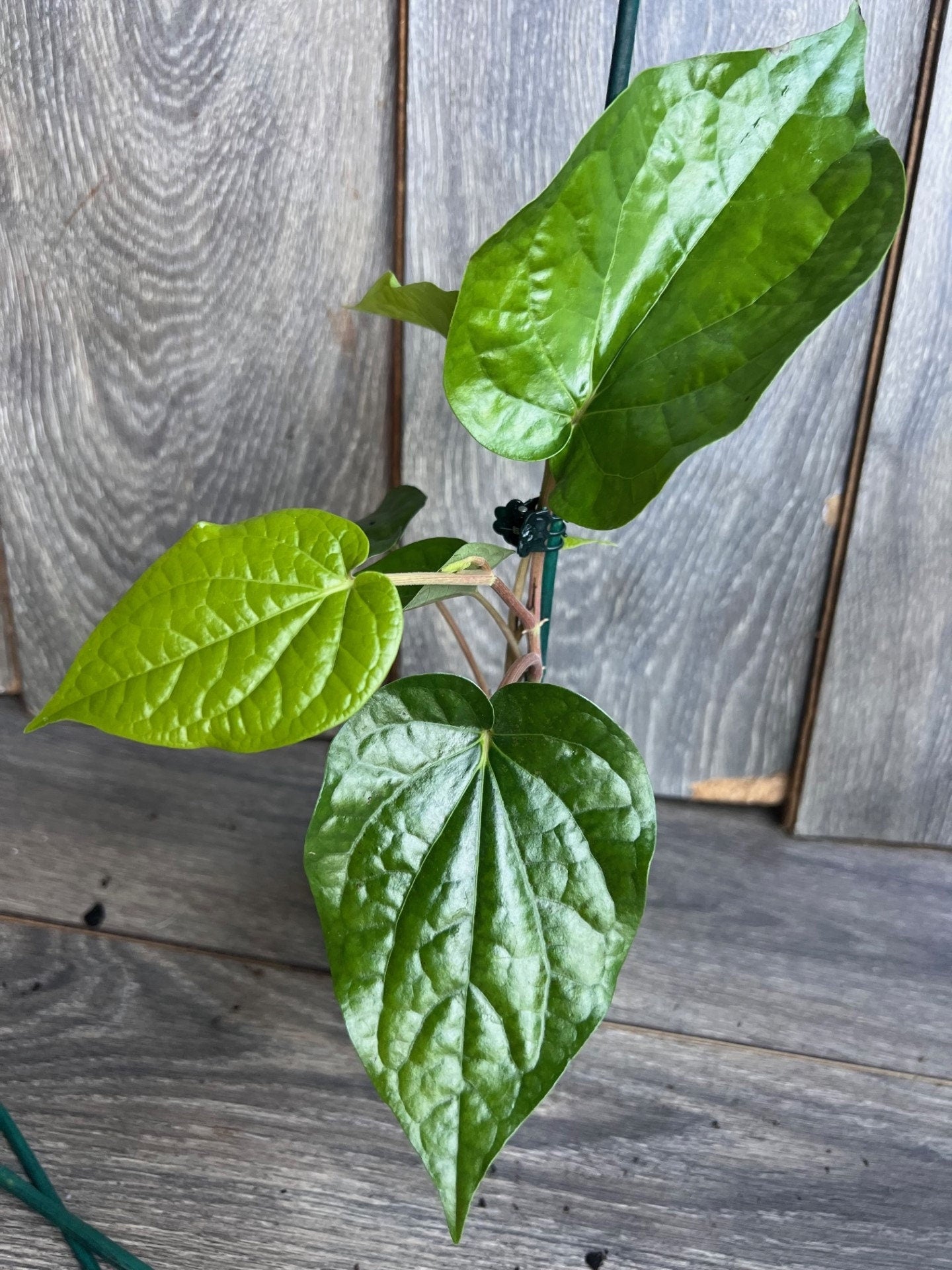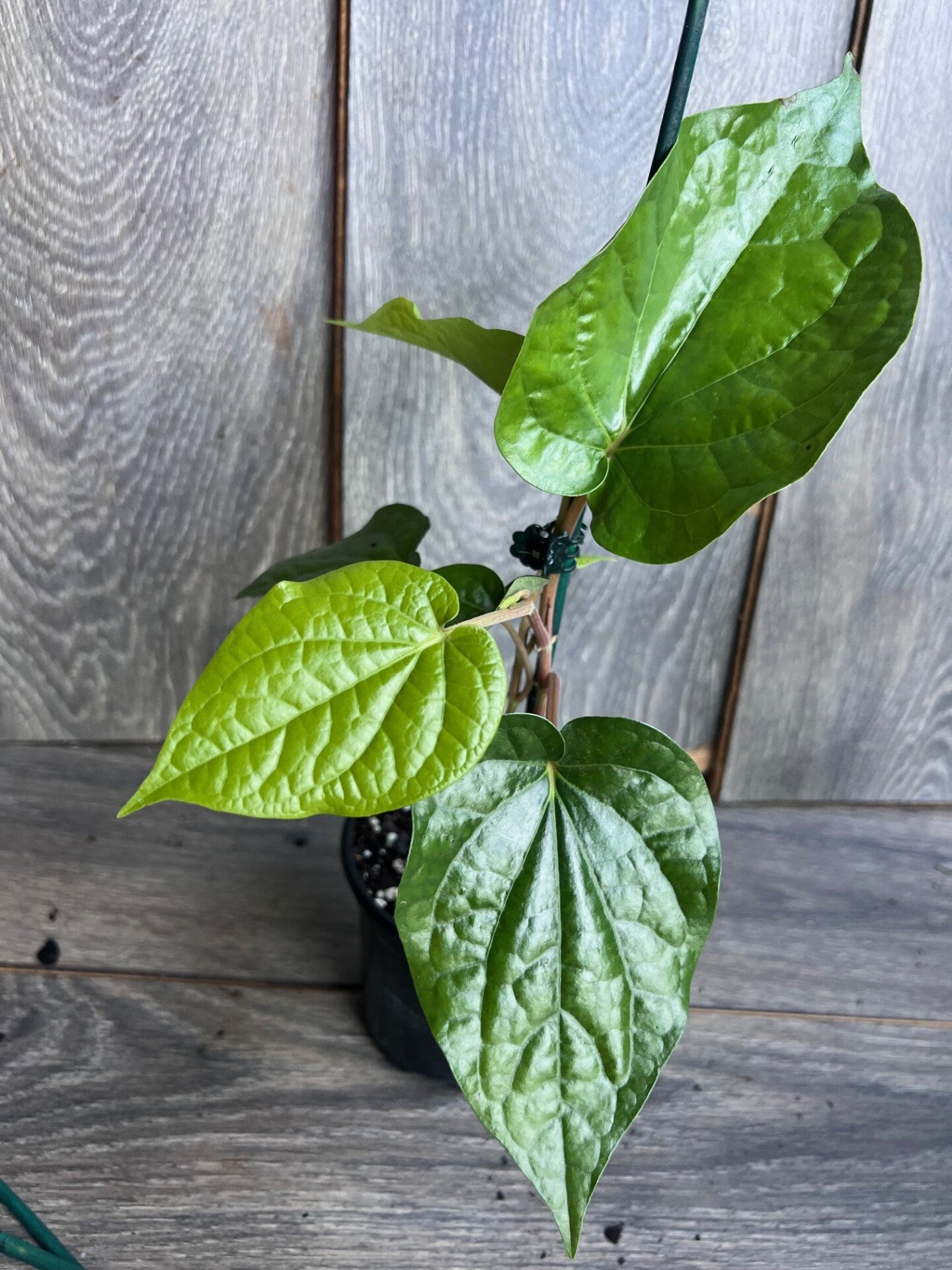Betel Leaf Plant, Piper Betel in 4" Pot , Daun Sirih Plant ,
Betel Leaf Plant, Piper Betel in 4" Pot , Daun Sirih Plant ,
Couldn't load pickup availability
Note: You will receive Betel plant in 4" pot, similar to the picture.
Betel Leaf Plant (Piper betle) Care Guide
The Betel leaf plant (Piper betle) is a tropical vine known for its aromatic, heart-shaped leaves, which are used traditionally in South and Southeast Asia for chewing. It is also grown for its ornamental value due to its lush foliage. This plant is relatively easy to care for and thrives in warm, humid climates, both indoors and outdoors.
Light Requirements
- Bright, Indirect Light: Prefers bright, indirect light. While it can tolerate some direct sunlight, harsh midday sun can scorch the leaves.
- Low Light Tolerance: Can survive in low light but may become leggy and produce fewer leaves.
- Ideal Location: If growing indoors, place it near a bright window with indirect sunlight. Outdoors, it thrives in partial to full shade in tropical climates.
Watering
- Keep Soil Moist, Not Soggy: The Betel leaf plant likes consistently moist soil but not waterlogged conditions. Ensure proper drainage.
- Watering Frequency: Water when the top inch of soil feels dry. Water thoroughly to reach the root zone.
- Avoid Standing Water: Ensure the pot has drainage holes. Empty any water that collects in the saucer to prevent root rot.
- Signs of Overwatering: Yellowing leaves, wilting, or a musty smell from the soil.
- Signs of Underwatering: Dry, dull leaves or crispy edges indicate the plant needs more water.
Temperature
- Warm, Tropical Temperatures: Thrives in temperatures between 70°F to 90°F (21°C to 32°C).
- Avoid Cold: Sensitive to temperatures below 50°F (10°C); exposure to cold can halt growth or damage the plant.
Humidity
- High Humidity: Prefers high humidity levels. If growing indoors in dry conditions, consider using a humidifier or place the plant in a naturally humid area (bathroom or kitchen).
- Misting: Regular misting can help, but ensure the plant is not sitting in water to prevent fungal issues.
Soil
- Well-Draining, Rich Soil: Needs soil that retains moisture without becoming soggy. A loamy or peaty mix is ideal. You can improve drainage with coconut coir, perlite, or sand.
- Soil pH: Prefers slightly acidic to neutral soil (pH 5.5–7.0). Ensure good drainage to avoid waterlogged roots.
Fertilizing
- Growing Season (Spring/Summer): Feed every 4-6 weeks with a balanced liquid fertilizer (e.g., 10-10-10) or a slow-release fertilizer to promote healthy growth.
- Fall/Winter: Reduce or stop fertilizing as the plant’s growth slows.
- Organic Fertilizers: Compost tea or worm castings are great organic alternatives.
Pruning and Maintenance
- Regular Pruning: Prune regularly to encourage bushy growth and maintain a neat shape. Cut back leggy stems to promote denser growth.
- Removing Dead Leaves: Trim yellowing or damaged leaves to keep the plant healthy and tidy.
- Training the Vine: Use a trellis, stake, or moss pole to support the plant's climbing nature. This helps keep it upright and encourages vertical growth.
Pests and Problems
-
Common Pests: While Betel leaf plants are pest-resistant, they can attract:
- Spider mites
- Mealybugs
- Aphids
- Scale insects
-
Pest Control: Treat infestations with insecticidal soap or neem oil. Regularly inspect the undersides of the leaves.
-
Yellowing Leaves: Can indicate overwatering, nutrient deficiencies, or low light. Adjust watering, light, and fertilization as needed.
-
Leaf Spotting: Fungal or bacterial infections can cause spots. Ensure good airflow, avoid overhead watering, and remove infected leaves to prevent spreading.
Toxicity
- Non-Toxic to Pets: Betel leaf plants are not toxic to pets, but it’s still a good idea to keep them out of reach to prevent chewing.
Propagation
-
By Stem Cuttings: The easiest way to propagate. Here’s how:
- Take a 6-8 inch cutting from a healthy stem below a leaf node.
- Remove the lower leaves, leaving a few at the top.
- Place the cutting in water or directly in moist soil.
- If propagating in water, wait 2-3 weeks for roots to form before transferring it to soil.
- If propagating in soil, keep the cutting moist and in a warm, humid location until roots develop (4-6 weeks).
-
By Air Layering: An alternative method where you induce roots to grow on a stem while it’s still attached to the parent plant. This method is more complex but results in a healthy new plant.
Summary
The Betel leaf plant (Piper betle) is a beautiful, low-maintenance tropical vine that thrives in warm, humid conditions. With the right care—bright indirect light, consistent moisture, and high humidity—it will grow vigorously, offering lush foliage and, in some cultures, aromatic leaves used for chewing. Whether grown indoors or outdoors, it's a lovely addition to any garden or home.
Share
